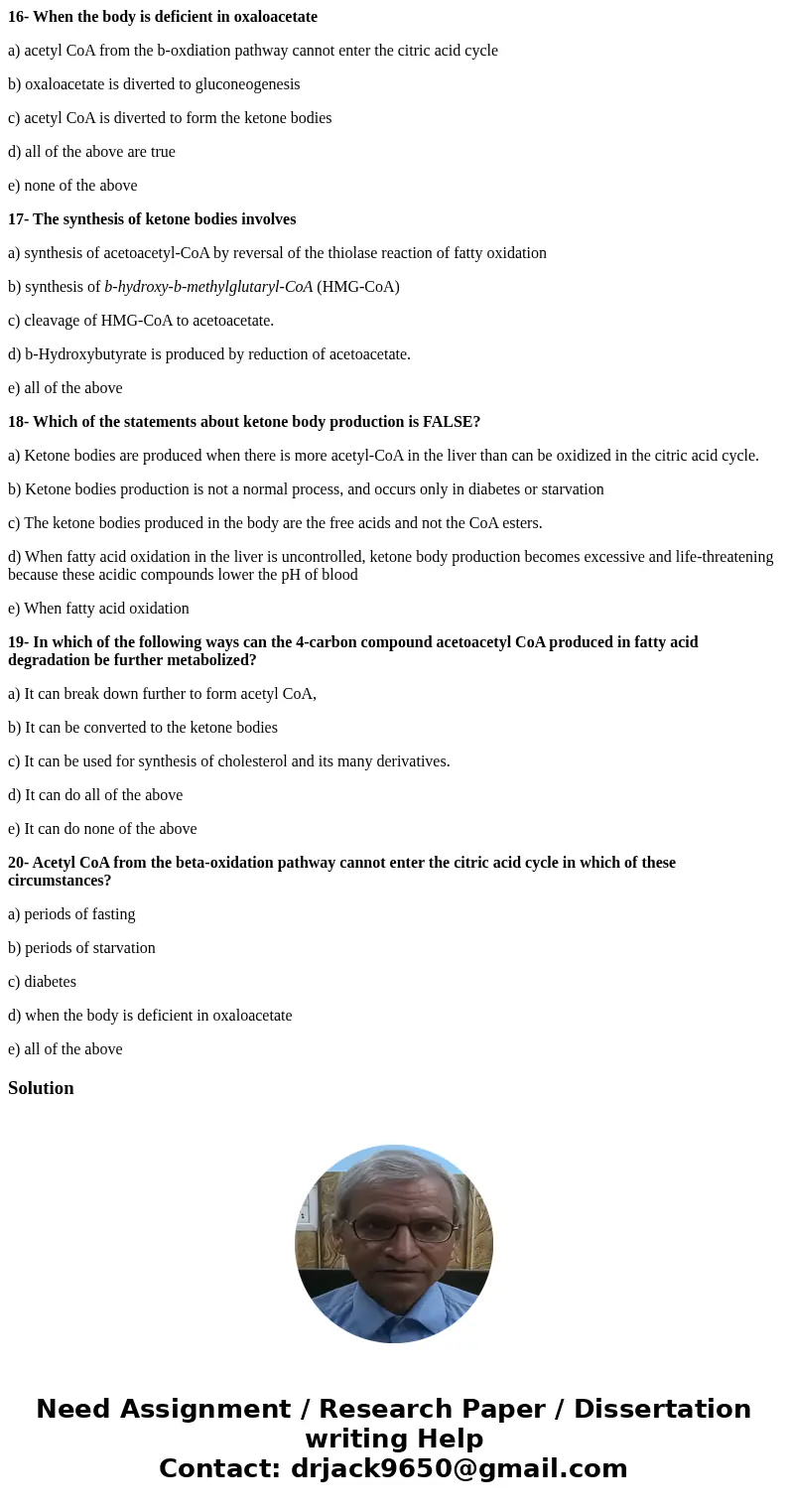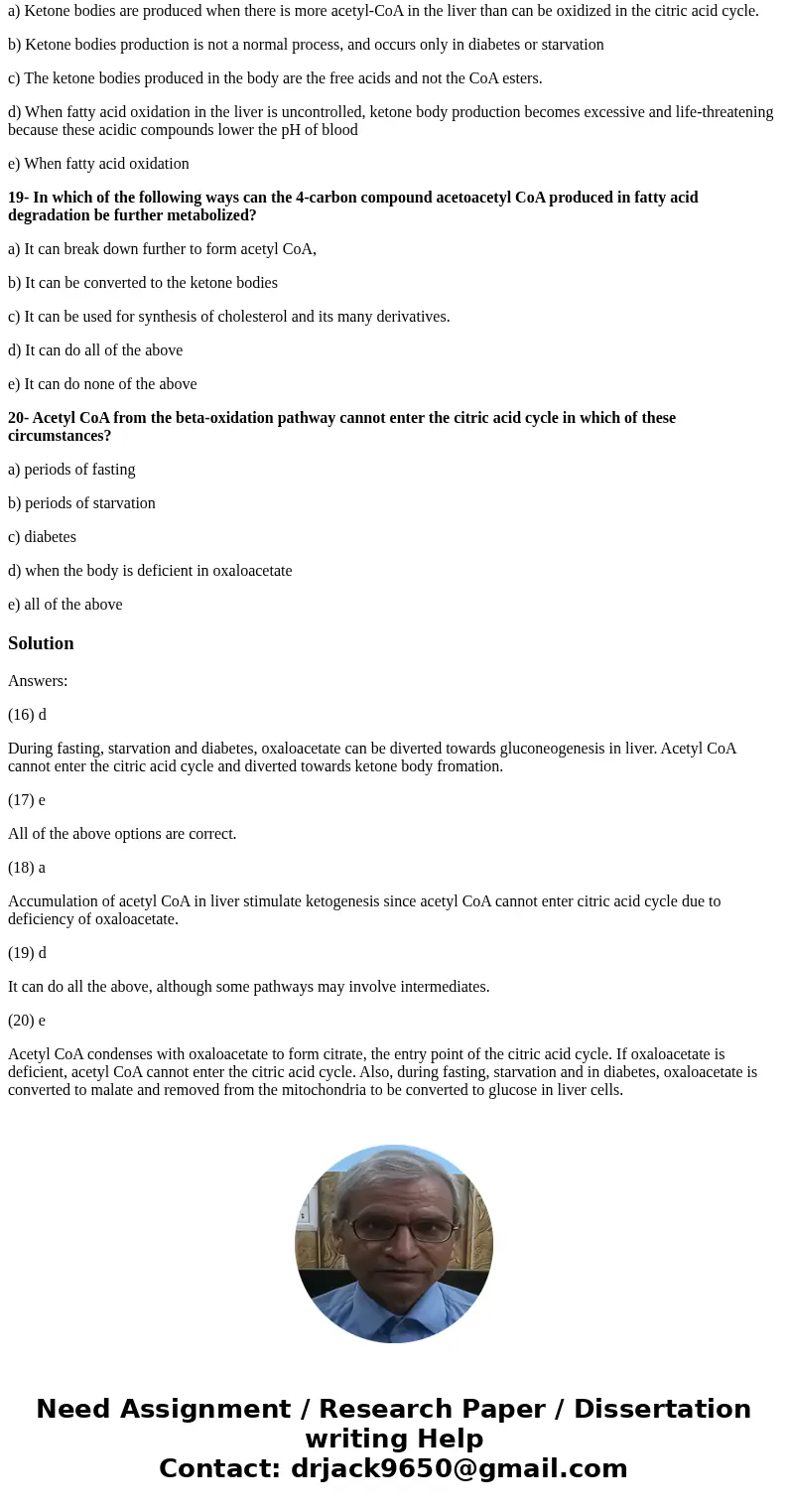16 When the body is deficient in oxaloacetate a acetyl CoA f
16- When the body is deficient in oxaloacetate
a) acetyl CoA from the b-oxdiation pathway cannot enter the citric acid cycle
b) oxaloacetate is diverted to gluconeogenesis
c) acetyl CoA is diverted to form the ketone bodies
d) all of the above are true
e) none of the above
17- The synthesis of ketone bodies involves
a) synthesis of acetoacetyl-CoA by reversal of the thiolase reaction of fatty oxidation
b) synthesis of b-hydroxy-b-methylglutaryl-CoA (HMG-CoA)
c) cleavage of HMG-CoA to acetoacetate.
d) b-Hydroxybutyrate is produced by reduction of acetoacetate.
e) all of the above
18- Which of the statements about ketone body production is FALSE?
a) Ketone bodies are produced when there is more acetyl-CoA in the liver than can be oxidized in the citric acid cycle.
b) Ketone bodies production is not a normal process, and occurs only in diabetes or starvation
c) The ketone bodies produced in the body are the free acids and not the CoA esters.
d) When fatty acid oxidation in the liver is uncontrolled, ketone body production becomes excessive and life-threatening because these acidic compounds lower the pH of blood
e) When fatty acid oxidation
19- In which of the following ways can the 4-carbon compound acetoacetyl CoA produced in fatty acid degradation be further metabolized?
a) It can break down further to form acetyl CoA,
b) It can be converted to the ketone bodies
c) It can be used for synthesis of cholesterol and its many derivatives.
d) It can do all of the above
e) It can do none of the above
20- Acetyl CoA from the beta-oxidation pathway cannot enter the citric acid cycle in which of these circumstances?
a) periods of fasting
b) periods of starvation
c) diabetes
d) when the body is deficient in oxaloacetate
e) all of the above
Solution
Answers:
(16) d
During fasting, starvation and diabetes, oxaloacetate can be diverted towards gluconeogenesis in liver. Acetyl CoA cannot enter the citric acid cycle and diverted towards ketone body fromation.
(17) e
All of the above options are correct.
(18) a
Accumulation of acetyl CoA in liver stimulate ketogenesis since acetyl CoA cannot enter citric acid cycle due to deficiency of oxaloacetate.
(19) d
It can do all the above, although some pathways may involve intermediates.
(20) e
Acetyl CoA condenses with oxaloacetate to form citrate, the entry point of the citric acid cycle. If oxaloacetate is deficient, acetyl CoA cannot enter the citric acid cycle. Also, during fasting, starvation and in diabetes, oxaloacetate is converted to malate and removed from the mitochondria to be converted to glucose in liver cells.


 Homework Sourse
Homework Sourse